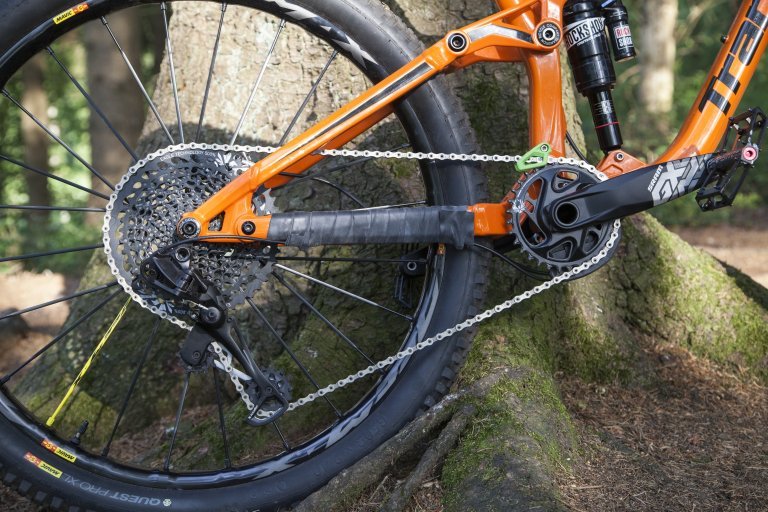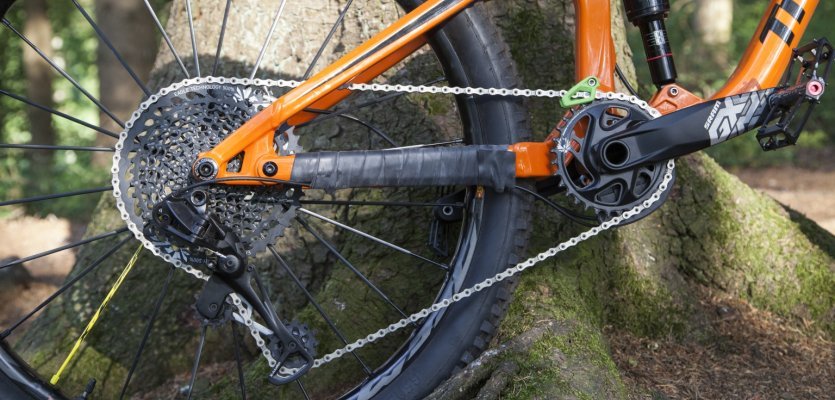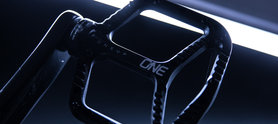
Review: SRAM GX Eagle
SRAM just introduced a junior member of the 12-speed Eagle family and Benny got his fingers on the brand new drivetrain. Check it out!
The 12-speed drivetrain itself is not a novelty anymore. In 2016, SRAM pushed the limits of the 11-speed world by introducing their XX1 and X01 Eagle groups, making the front derailleur obsolete once and for all. Shifting just got a whole lot simpler, allowing athletes to focus on riding. In addition, the cockpit got rid of the shifter.
By introducing the GX Eagle, SRAM advances into new territory, offering a 12-speed drivetrain at a price tag that makes upgrading really attractive. The GX Eagle does weigh about 400 grams more than the other family members. However, the extra range provided makes it well worth it.
The look and feel of the GX Eagle
SRAM’s new drivetrain comes in matte black combined with grey GX Eagle decals. The whole groupset is really clean and new looking.
The crankarms stick out. They have a solid look to them, but are a little bulkier than the X01 and XX1 cranksets. This is most likely due to the compromise between weight and robustness.
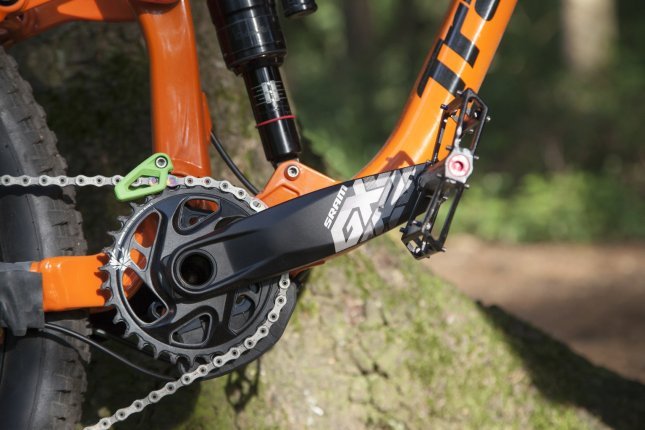
The forged aluminium crank arms vouch for durability.
A closer look at the inward facing side of the crankarms prooves this assumption. SRAM’s engineering know-how is clearly visible. Forged aluminium makes weight savings possible, without driving up the price or compromising on durability.
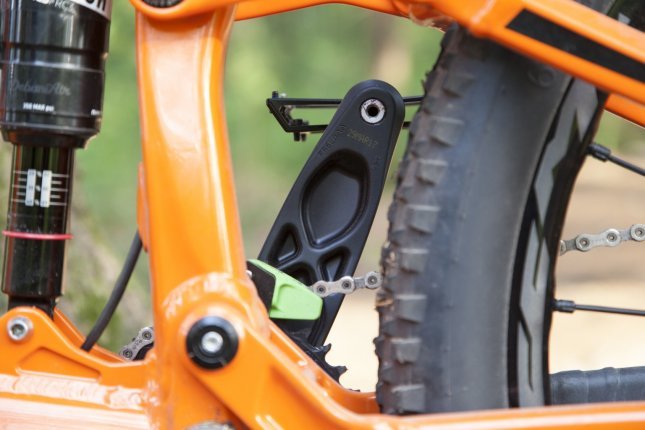
The crankarm’s backside reveals how weight savings can be achieved without compromising on durability.
The shifters also feature the Eagle logo. Its trigger is a little more squared than the previous version.
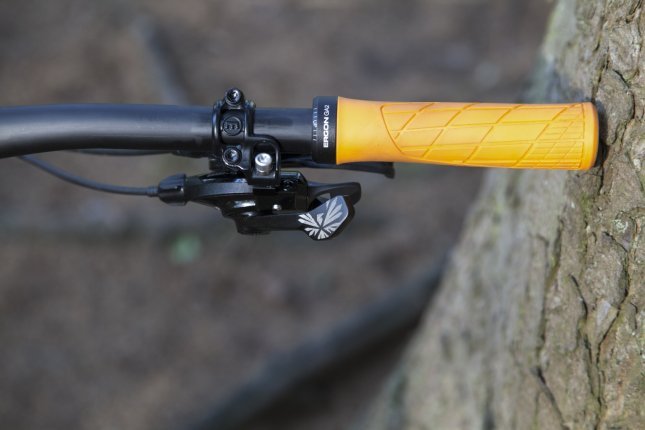
The new trigger features the Eagle logo.
The rear derailleur features large pulleys and is designed to realize the 10-50 range from the Eagle cassette. The aluminium cage houses a strong steel spring and the derailleur‘s X-HORIZON design makes for absolute robustness without compromising on shifting performance and efficiency. Of course, the cage lock is not missing, making for easy wheel installation.
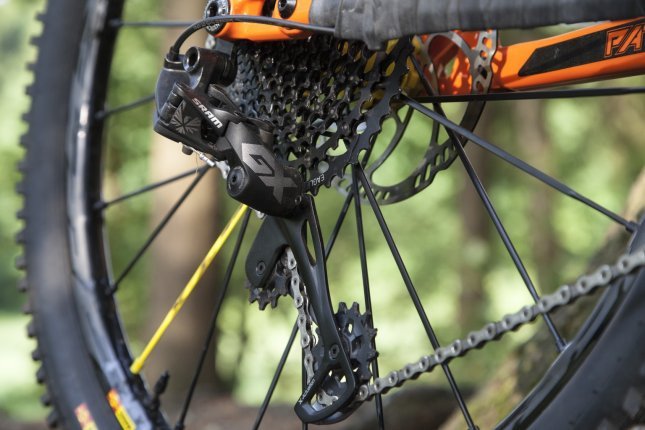
The rear derailleur is built to handle the 10-50t range.
GX Eagle Groups - Comparison Table
| GX Eagle | XO1 Eagle | XX1 Eagle | |
|---|---|---|---|
| Price | 489.00 € | 929.00 € | 1129.00 € |
| Weight | 1900 g | 1500 g | 1450 g |
| Crankset | 7000 Aluminium | Carbon - Foam Core | Carbon - Hollow Core |
| Derailleur | Aluminium | Aluminium, Titanium Spring | Aluminium, Carbon, Titanium Spring |
| Trigger | Aluminium, Plastic | Aluminium | Aluminium, Carbon |
| Cassette | 11 Steel, 50T Aluminium | 11 Cromoly Steel, 50T Aluminium | 11 Cromoly Steel, 50T Aluminium |
| Application | Trail, Enduro | Trail, Enduro | XC |
Where lies the difference between the new GX Eagle and the X01 and XX1 Eagle drivetrains?
The three goups are very similar in their functionality. The gradation of the cassette - 10t, 12t, 14t, 16t, 18t, 21t, 24t, 28t, 32t, 36t, 42t, 50t – and the built of the Eagle specific X-Sync™ 2 chainring are the same across all three groups.
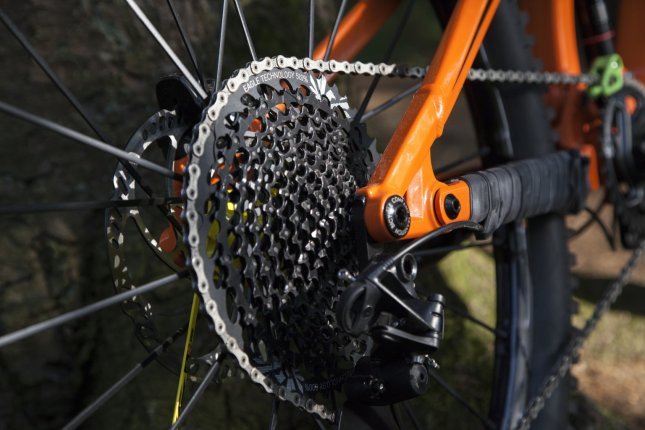
All Eagle cassettes have the gradation 10-50t: 10t, 12t, 14t, 16t, 18t, 21t, 24t, 28t, 32t, 36t, 42t, 50t.
The direct mount for the chainring stayed the same as well. However, very different are the materials used to make the GX Eagle. Hence the increased weight and drastically lower price.
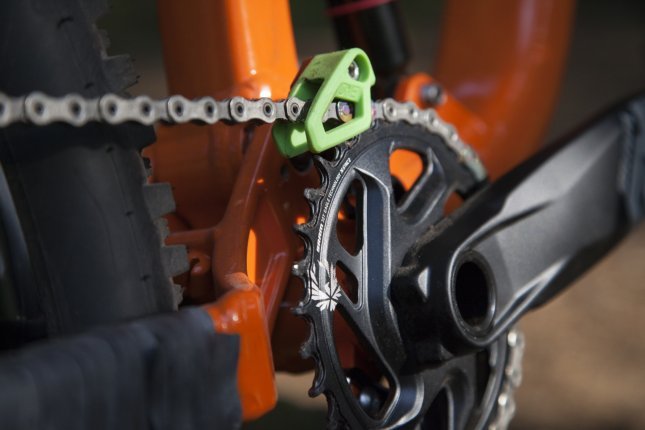
The light weight and durable GX Eagle direct mount ring construction.
The cassette is made of heavy steel, while aluminium and plastic were used to make the shifter.
Installation of the GX Eagle
The following video shows the installation of the GX Eagle using the XX1 drivetrain as an example. The step-by-step guide goes into every detail. I simply want to point out a couple of things to remember to make the installation a smooth experience.
- Make sure to release the pressure from your rear shocks before determining the length of the chain. Also run the chain on the largest cog. This way you can account for any position of your rear triangle without risking breaking your chain.
- When adjusting the derailleur, make sure to set the limits correctly, using the provided adjustment tool.
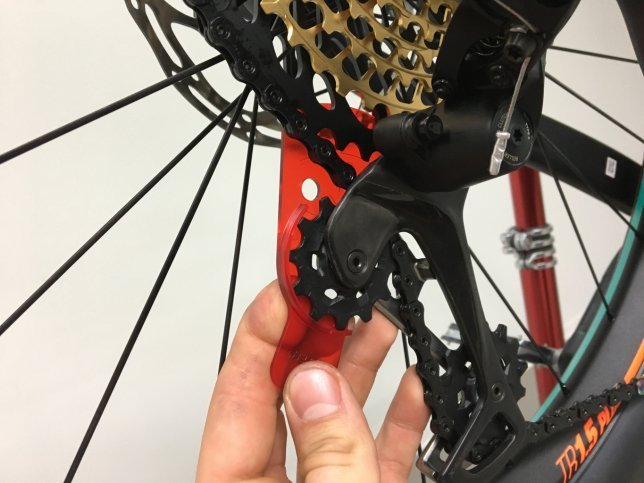
The red adjustment tool makes derailleur set-up easy.
The GX Eagle on the trail
The first time I rode the GX Eagle, I was at the Bike Festival at Lake Garda at the beginning of May. The rock-covered, gnarly trails had all my attention and I barely noticed that I was riding a new drivetrain. That was a good sign as the rider’s focus should always be on the trail.
In the following week, I installed the new group on my Transition Patrol. The GX Eagle has been performing well from the first day. The chain has not come off the chainring once, shifting performance is excellent, even under the harshest conditions. The last big jump from the 42 tooth cog to the large 50 tooth cog was my biggest concern, but even this step is taken with pride and gear changes are performed smoothly.
The GX Eagle is a great drivetrain at a really cool price, offering a lot more range.
Related articles


